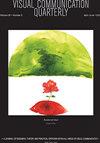Returning the Gaze: A Visual Analysis of Jack Iwata’s Photography in Japanese American Internment Camps
IF 0.4
Q4 COMMUNICATION
引用次数: 0
Abstract
This work explores photography’s potential to return the gaze and challenge powerholders within spaces of control. The authors analyzed 167 photographs from the Japanese American National Museum Jack Iwata Photo Collection to understand disciplinary mechanisms within a carceral landscape and the potential surveillance therein. The authors concluded that these historical photographs can not only supplement historical narratives of internment but also provide insight on methods of actual and potential visibility. At the same time, the authors contend that Iwata’s images are composed in ways that challenge authority.回归凝视:杰克·岩田在日裔美国人拘留营的摄影视觉分析
这件作品探索了摄影在控制空间内回归凝视和挑战掌权者的潜力。作者分析了167张来自日裔美国人国立博物馆杰克·岩田图片集的照片,以了解一个艺术景观中的纪律机制以及其中潜在的监视。作者的结论是,这些历史照片不仅可以补充拘留的历史叙述,而且可以提供对实际和潜在可见性方法的见解。与此同时,作者认为岩田聪的图像是以挑战权威的方式构成的。
本文章由计算机程序翻译,如有差异,请以英文原文为准。
求助全文
约1分钟内获得全文
求助全文

 求助内容:
求助内容: 应助结果提醒方式:
应助结果提醒方式:


